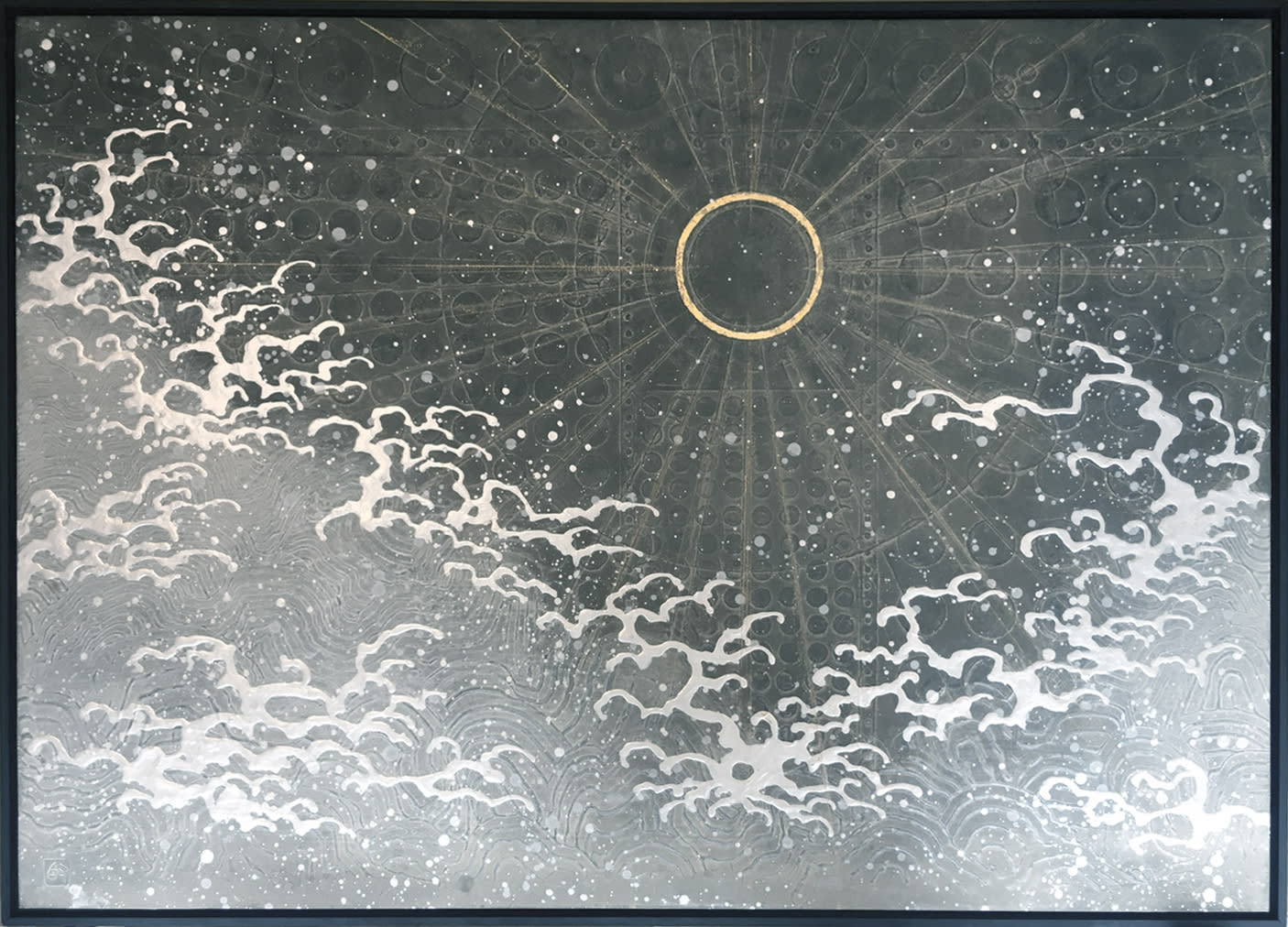Ken Matsubara Japanese, b. 1948
Venus, 2020
Painting
H25 5/8 x W35 7/8 in
H65 x W91 cm
H65 x W91 cm
A21332
In this relatively small composition, Matsubara paints a radiant, golden Venus, set between undulating, frothy waves. Also called the “morning star,” in Buddhist cosmology Venus is associated with the bodhisattva Akasagarbha (known in Japanese as Kokūzō). Matsubara’s “Venus” evokes the spiritual awakening of the monk Kūkai (774-835), who retreated to a remote water side cave where he repeatedly recited the Akasagarbha Sutra as he worked towards spiritual awakening.
Matsubara depicts the sun and the moon in this pair of short, square folding screens. Light emanates from the sun’s golden halo on the left screen, reaching across space to a half-moon of white gold at the far right of the right screen. The image of the moon rests on the ocean rippling waves leading us to question if it is genuinely the moon we see or its reflection. The combination of the sun, moon, and sea recalls the life of the Buddhist monk Kūkai (774-835), who retreated to an oceanside cave as he meditated on the cycles of night, day, and sea to achieve awakening eventually. The viewer becomes part of this natural rotation sitting between the open screens.
Matsubara depicts the sun and the moon in this pair of short, square folding screens. Light emanates from the sun’s golden halo on the left screen, reaching across space to a half-moon of white gold at the far right of the right screen. The image of the moon rests on the ocean rippling waves leading us to question if it is genuinely the moon we see or its reflection. The combination of the sun, moon, and sea recalls the life of the Buddhist monk Kūkai (774-835), who retreated to an oceanside cave as he meditated on the cycles of night, day, and sea to achieve awakening eventually. The viewer becomes part of this natural rotation sitting between the open screens.
Join the Ippodo Gallery newsletter
* denotes required fields
We will process the personal data you have supplied to communicate with you in accordance with our Privacy Policy. You can unsubscribe or change your preferences at any time by clicking the link in our emails.
